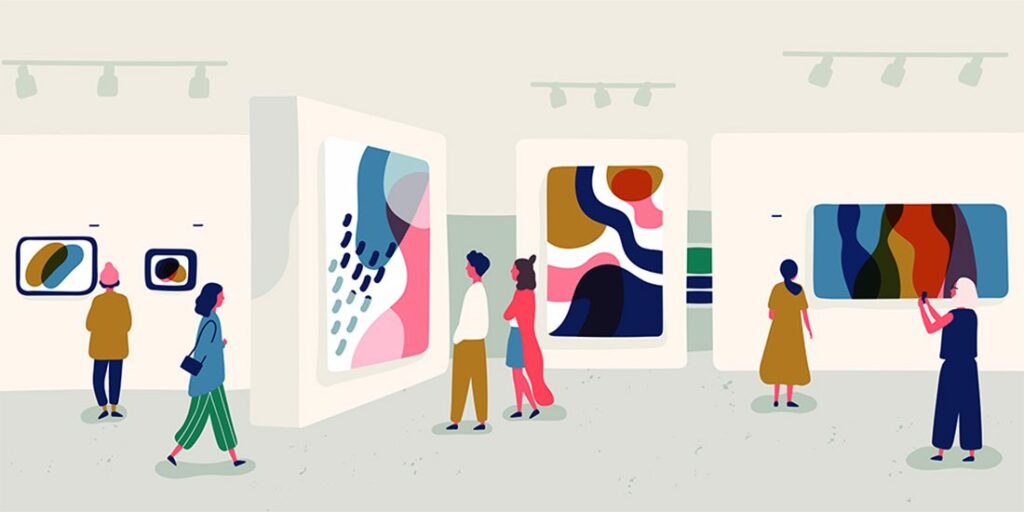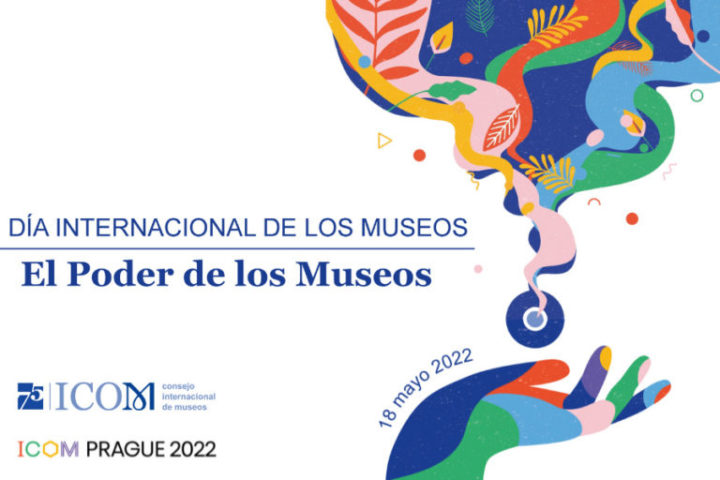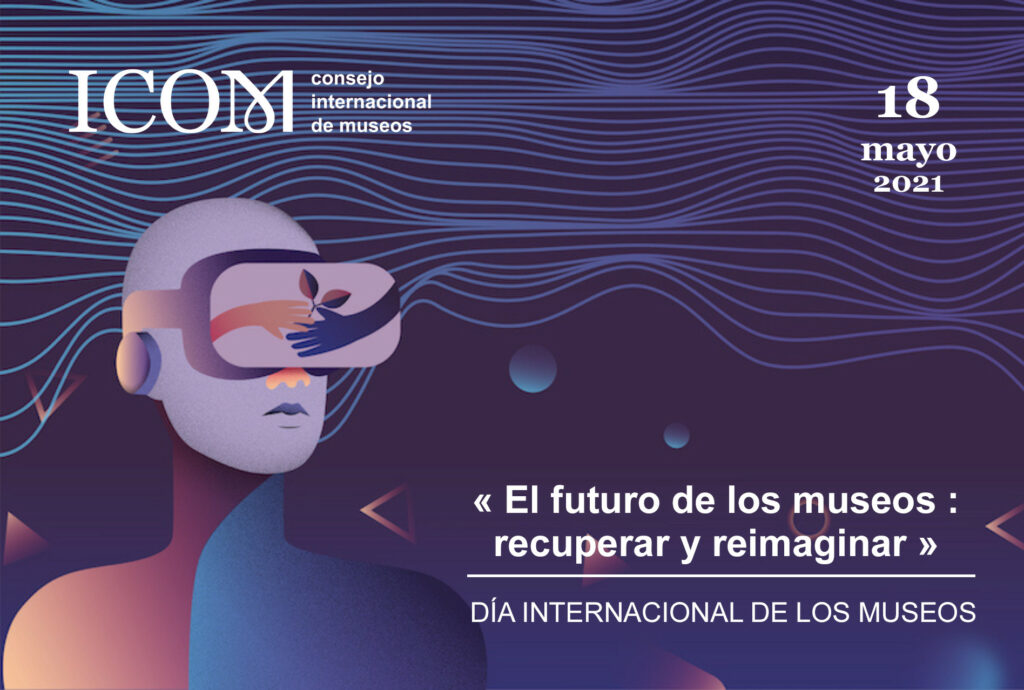Esta entrada también está disponible en: Aragonés Català Español Français English
BLANK NIGHTS
Can you imagine the works of art chatting for a while after work? I propose a game. This is a dialogue between works of art from museums in Zaragoza, but it’s up to you to name the characters. Which works of art could be chatting here?
– (1): So many tourists are killing me. I need a holiday.
– (2): At least you’re behind a glass case and they don’t touch your ass fleetingly when they think nobody notices.
– (1): That’s the thing about the avant-garde, it makes you want to touch. I’m telling you, nobody touches this one.
– (3): Listen, it’s not my fault that I’m a latrine. Besides, respect the grey hairs, I’m more than 2000 years old.
– (4): Is it possible?
– (2): Come in, engraving.
– (4): It’s a good thing you proposed the aftework, I’m already exhausted and the season hasn’t even started yet.
– (3): In my day no one used to say strange words to meet up after work.
– (4): In your day there was no television either and you don’t complain about that.
– (3): You Goya people get so uppity…
– (1): Peace out, we’re going to get caught out of our jobs if you talk so loud.
– (4): Have you heard that there are fewer and fewer people visiting us?
-(2): Yes, it’s a pity, we have some amazing stories to tell. I used to be a dancer.
-(3): I have had some great historical personalities above me.
– (1): The illustrious asses that have passed through your hole!
(1, 2 and 4) LAUGH OUT LOUDLY.
– (3): Assholes…
– (2): Don’t go away, you latrine!
-(4): The truth is that it does have some amazing stories… Do you know that in the room where I was there were 29 latrines and people did their business there all together?
– (1): So, it’s a shitty story.
THEY LAUGH AGAIN
– (2): Let’s not go on like that, he’s angry and doesn’t seem to be coming back. Come on, I’ll tell him to tell us, let’s see if we can learn something and make peace.
– (1): Let’s see if you can get him to come back and we can each tell our story.
The scene is thought of as a conversation between four artworks: What specific works are they talking about? In some cases there are many possible works and in others the dialogue tells you exactly who is talking. It”s up to you to research!
Do you think museums can change the world? Take a look at our reflection below.
Description
International Museum Day is an event coordinated by the International Council of Museums (ICOM). Celebrations also extend to the days before and after. It is an occasion to open museums to the public, and to raise awareness of the vital importance of these facilities.
The museum is an institution at the service of society: it acquires, conserves, researches, exhibits and transmits the tangible and intangible heritage of humanity and its environment for the purposes of education, study… as well as entertainment and enjoyment.
Museums make a fundamental contribution to the well-being and sustainable development of our communities. The activities associated with this International Day in 2023 are closely linked to the Sustainable Development Goal “Health and well-being”.

Further information
- On the website of the International Council of Museums (ICOM)
- Specific website of this International Day
The contents and objectives of this proposal relate to the celebration of the International Day of Education (24 January).
In Aragon…
Our autonomous community has a magnificent network of museums, with a wide variety of themes. There are archaeological, fine arts, contemporary art, ethnology and anthropology, palaeontology and natural science museums; general museums and specialised museums; public museums run by different administrations and private museums, managed by individuals, foundations, ecclesiastical dioceses, and so on. Most of these centres are part of the Aragon Museum System. They host permanent collections and temporary exhibitions; in many cases they are endowed with interesting interactive and intuitive resources and increasingly comprehensive tools and educational proposals.
The museums managed by the Government of Aragon are the Museum of Huesca (Museo de Huesca) and the Aragon Pedagogical Museum (Museo Pedagógico de Aragón), both in the capital of Huesca; the Juan Cabré Museum, in Calaceite/Calaceit (Teruel); and in Saragossa, the Aragonese Institute of Contemporary Art and Culture (IAACC: Instituto Aragonés de Arte y Cultura Contemporáneos) Pablo Serrano and the Museum of Saragossa (Museo de Zaragoza), made up of several sites.
In some cases, in addition to the content itself, the “wrapping” is of interest, as they are buildings with a great deal of history and significance.

A detail
The Spanish Digital Network of Museum Collections brings together museums of different specialties, from different thematic and geographical areas and of different public and private ownership, with the aim of making digital content about their collections available online and creating a space for the dissemination of knowledge about them. Several Aragonese museums are part of this network and their collections form part of a large collective online catalogue (CER.ES. Collections in Red).
This tool allows general and advanced searches to be carried out in all the museums or in a selection made by the user. It is possible to search in the catalogue of each museum or in one or several groupings by type of museum, geographical location, ownership…
CER.ES Aragón publishes more than 14,000 cultural assets belonging to 23 museums. The progressive incorporation of new content and new museums is planned, which will enrich this space for the dissemination of knowledge about the collections at the service of all users who wish to approach the museums of Aragon through the Web.
A reflection
“The power of museums” was the slogan for the celebration of Museum Day in 2022. Museums have the power to transform the world around us. As unparalleled places of discovery, they teach us about our past and open our minds to new ideas, helping to build a better future.

ICOM promotes the idea of the museum as a support for sustainability: as key players in their local communities, museums contribute to many of the United Nations Sustainable Development Goals for 2030, including aspects related to the social economy and the dissemination of scientific information on environmental challenges.) In addition, they also influence innovation, digitisation and accessibility. Finally, they are powerful drivers of education, which is essential in community building.

Suggestions for teachers
The previous point helps us to better understand the transversality to which this International Day invites us. The possibilities opened up by this subject are endless. There is a very wide range of didactic activities offered by the main Aragonese museum spaces.
Among them (only as a sample), the teacher can explore:
- Activities for schoolchildren at the Museum of Huesca
- Aragonese Museum of Paleontology – Fundación Dinópolis Teruel: Educational activities
- Museum of Zaragoza. Didactic offer
- IAACC Pablo Serrano (Saragossa/Zaragoza)
- Pedagogical Museum of Aragon (Huesca)
- Juan Cabré Museum (Calaceite/Calaceit)
- Pablo Gargallo Museum (Saragossa/Zaragoza)
Some of them have resources to work remotely, virtual visits, interactive activities…
The aesthetics of the museums themselves, their value as architectural heritage, as emblematic buildings, with history (for example, to mention just two very specific cases, the museums of Huesca and Zaragoza have a lot to say in this respect and can help to develop excursions in this area). It can be useful to consult the book of Elena Marcén The Aragonese museums and their architecture.

Beyond what Museum Day (or the days surrounding it) can bring about in classroom work, and beyond the specific offers that allow a group visit to a specific museum, the final objective should be more ambitious: to contribute to the creation of new audiences that help to keep the cultural fabric of the community alive. We are talking about readers, spectators and visitors to museums and exhibitions, potential consumers of cultural products. It would also be ideal to help develop curiosity, to encourage independent visits by pupils with friends and family at any time of the year.

Another attractive element to insist on is the interdisciplinary character of museums (“not only old things”), the wide variety of subjects and the private and personal concerns they can satisfy. The idea of museums as living and active (very conducive, as we have seen, to digital communities, networks, online resources) should prevail.
By upholding democratic values and offering lifelong learning opportunities, museums contribute to shaping an informed and engaged civil society, and in this sense, the school is fundamental as a “springboard”.
Methodological principles and cross-curricular elements
This proposal focuses on the promotion of creativity and critical thinking through open tasks and activities that challenge students in all subjects. In this way, discovery is encouraged as a fundamental way of learning, the concretion of the interrelation of learning both in each subject and in an interdisciplinary way, the relationship with the social and natural environment and the relationship with families as essential educational agents.
Objectives that this proposal helps to achieve
ESO:
- To develop basic skills in the use of information sources in order to acquire new knowledge with a critical sense. To acquire a basic preparation in the field of technologies, especially information and communication technologies.
- To conceive scientific knowledge as an integrated knowledge, which is structured in different disciplines, as well as to know and apply the methods to identify problems in the different fields of knowledge and experience.
- To know, value and respect the basic aspects of one’s own and others’ culture and history, as well as artistic and cultural heritage.
- To appreciate artistic creation and understand the language of the different artistic manifestations, using different means of expression and representation.
Baccalaureate:
- To use information and communication technologies with solvency and responsibility.
- To know and critically assess the realities of the contemporary world, its historical background and the main factors of its evolution. Participate in a supportive way in the development and improvement of their social environment.
- To access fundamental scientific and technological knowledge and master the basic skills of the chosen modality.
- To develop artistic and literary sensitivity, as well as aesthetic criteria, as sources of training and cultural enrichment.
Subjects with which it can be linked
- Plastic, Visual and Audiovisual Education / Other subjects of a scientific or humanistic-social nature (ESO, 1st and 2nd cycles)
- Given its interdisciplinary nature (not exclusively artistic), it can be adapted to any modality (Baccalaureate).
Development of competences
- Cultural awareness and expressions
- Learning to learn
